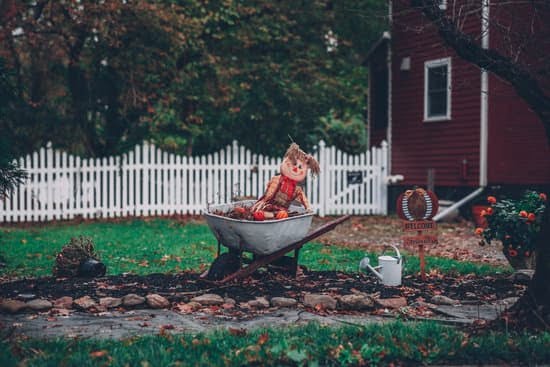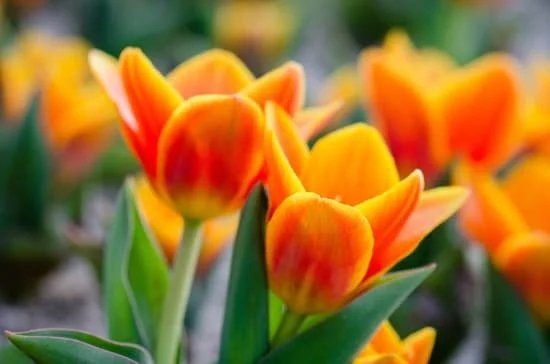Container vegetable gardens ideas are an excellent way to enjoy homegrown produce, even if you don’t have a large yard or garden space. In this article, we will explore the benefits of container gardening and provide tips and suggestions for creating your own thriving container vegetable garden. From choosing the right containers to selecting the best vegetables for your space, we will cover everything you need to know to get started on your gardening journey.
When it comes to container gardening, there are numerous advantages to consider. Not only does it allow those with limited outdoor space to still enjoy the benefits of gardening, but it also provides greater control over soil conditions and makes it easier to protect plants from pests and diseases. Additionally, container gardens can be easily moved around to optimize sunlight exposure and enhance aesthetic appeal.
In the following sections, we will delve into the key considerations for successful container gardening, including selecting the right containers, essential tools and supplies, choosing the best vegetables for small spaces, designing your container garden layout, maintenance and care tips, creative ideas for vertical and hanging gardens, as well as harvesting and enjoying the fruits of your labor.
Whether you’re a beginner or seasoned gardener looking for new ideas, this article will provide valuable insights for creating a bountiful and beautiful container vegetable garden.
Choosing the Right Containers
When it comes to creating a successful container vegetable garden, choosing the right containers is crucial. The size, material, and drainage of your containers can greatly impact the health and productivity of your vegetables.
First, consider the size of your containers. Larger containers are generally better for growing vegetables because they provide more space for root growth and allow for better moisture retention. For example, tomatoes, peppers, and eggplants will thrive in larger containers, while smaller herbs can be grown in smaller pots.
Next, think about the material of your containers. Clay pots are porous and allow air and moisture to pass through the walls, but they also dry out quickly and may require more frequent watering. Plastic containers are lightweight and retain moisture well, but they can heat up quickly in the sun. Fabric pots are another option that provides good drainage and air circulation for plant roots.
Lastly, proper drainage is essential for container gardening success. Ensure that your containers have drainage holes at the bottom to prevent waterlogging and root rot. You can also add a layer of gravel or shards of broken clay pots at the bottom of your containers to improve drainage.
In summary, when selecting containers for your vegetable garden, prioritize size, material, and drainage to provide a suitable environment for your plants to thrive.
| Aspect | Consideration |
|---|---|
| Size | Choose larger containers for vegetables with extensive root systems |
| Material | Consider clay pots for good air circulation or plastic/fabric pots for moisture retention |
| Drainage | Ensure containers have adequate drainage holes at the bottom |
Essential Tools and Supplies for Container Gardening
Container vegetable gardens are a convenient and practical way to grow your own produce, especially if you have limited space or poor soil quality. In order to successfully start and maintain a container vegetable garden, it is important to have the right tools and supplies on hand. These essentials can make the gardening process much more manageable and enjoyable.
One of the most essential tools for container gardening is a trowel or hand shovel, which will allow you to easily dig and move soil when planting and transplanting your vegetables. A watering can with a narrow spout is also crucial for giving your plants the right amount of water without causing waterlogging. Additionally, having a pair of pruning shears for trimming and harvesting your plants will be beneficial.
In terms of supplies, high-quality potting mix is key for providing the right nutrients and drainage for your container garden. Look for a mix that contains peat moss, perlite, vermiculite, and organic matter. You will also need an assortment of containers in various sizes, materials (such as plastic, ceramic, or terracotta), and with adequate drainage holes to accommodate different types of vegetables.
| Essential Tools | Supplies |
|---|---|
| Trowel or hand shovel | High-quality potting mix |
| Watering can | Assortment of containers |
| Pruning shears |
Having these tools and supplies readily available will set you up for success as you embark on your container vegetable gardening journey.
Selecting the Best Vegetables for Container Gardens
When it comes to selecting the best vegetables for your container garden, there are a few important factors to consider. The size of the container, the amount of sunlight your garden will receive, and the climate in your area all play a role in determining which vegetables will thrive in containers. Here are some tips and suggestions for choosing the best vegetables for your container garden:
- Tomatoes: Tomatoes are one of the most popular vegetables to grow in containers. They do well in large containers with good support for their vines, and they require plenty of sunlight.
- Peppers: Bell peppers, chili peppers, and other varieties of peppers can also be grown in containers. Choose a larger pot to accommodate their root systems and make sure they receive at least 6 hours of sunlight each day.
- Lettuce: Lettuce is a great option for container gardens, especially if you have limited space. It can be grown in shallow containers and does well in partial shade.
In addition to these suggestions, many other vegetables can be successfully grown in containers, including carrots, radishes, beans, and herbs like basil and parsley. When choosing your vegetables, consider the space you have available, the amount of sunlight they will receive, and any specific care requirements they may have.
Keep in mind that some vegetables may require regular watering or fertilization, so be sure to research the specific needs of each vegetable before planting them in your container garden. With careful planning and consideration, you can create a thriving container vegetable garden that provides you with a bountiful harvest throughout the growing season.
Designing Your Container Garden
When it comes to designing your container garden, there are a variety of factors to consider to ensure that your garden is not only functional but visually appealing as well. The layout and aesthetic considerations of your container garden can greatly enhance the overall look and feel of your outdoor space.
Layout Considerations
When designing the layout of your container garden, it’s essential to consider the available space and sunlight. Placing taller plants towards the back or center of your garden can create depth and visual interest. Additionally, grouping containers together in an organized manner can create a cohesive and polished look.
Aesthetic Considerations
Incorporating different colors, textures, and heights into your container garden can add visual interest and beauty. Mixing various types of vegetables, herbs, and flowers in one container or grouping complementary plants together can create a visually stunning display. Additionally, using decorative containers or adding trellises and stakes for climbing plants can elevate the aesthetic appeal of your container garden.
Seasonal Aesthetics
To keep your container garden looking fresh and vibrant throughout the year, consider rotating seasonal plants or flowers to maintain a changing aesthetic. Spring bulbs, summer blooms, fall foliage, and winter evergreens can all contribute to creating a visually appealing container garden throughout the seasons.
By carefully considering the layout and aesthetics of your container vegetable gardens ideas, you can create a beautiful and functional outdoor space that will be a joy to tend to throughout the year.
Maintaining and Caring for Your Container Garden
Watering Your Container Garden
One of the most crucial aspects of maintaining a healthy container vegetable garden is ensuring that your plants receive adequate water. Since containers can dry out more quickly than traditional garden beds, it’s important to water them regularly, especially during hot summer months. A good rule of thumb is to check the moisture level of the soil by inserting your finger into it.
If the top inch feels dry, it’s time to water. Consider investing in a drip irrigation system or self-watering containers to make watering more convenient.
Fertilizing Your Container Garden
Container-grown vegetables often require more frequent fertilization than those grown in the ground since their access to nutrients is more limited. To ensure healthy plant growth and bountiful produce, consider using a slow-release organic fertilizer specifically formulated for vegetables. Be mindful not to over-fertilize, as this can harm your plants. Follow the package instructions for application rates and timing.
Pest Control in Container Gardens
Pests can be just as much of a threat to container vegetable gardens as they are to traditional gardens. Keep an eye out for common pests like aphids, spider mites, and caterpillars. Regularly inspect your plants for signs of pest damage and consider using environmentally friendly pest control methods such as diatomaceous earth or neem oil. Additionally, introducing beneficial insects like ladybugs or lacewings can help naturally control pest populations without the need for harmful chemicals.
By paying close attention to watering, fertilizing, and pest control in your container vegetable garden, you can ensure that your plants thrive and provide you with an abundant harvest throughout the growing season.
Creative Ideas for Vertical and Hanging Container Gardens
When space is limited, vertical and hanging container gardens are a great alternative for growing vegetables. Not only do they maximize space, but they also add a unique aesthetic element to your outdoor or indoor areas. Here are some creative ideas for setting up vertical and hanging container gardens:
1. Vertical Garden Walls: Utilize a blank wall by installing vertical garden planters. These can be either freestanding or wall-mounted structures that allow you to grow multiple plants in a small footprint.
2. Hanging Baskets: Hang baskets from the ceiling or on hooks along a fence to create a visually appealing display of cascading vegetables. Choose lightweight containers with good drainage to prevent water buildup and ensure healthy plant growth.
3. Trellises and Arbors: Train vining vegetables, such as tomatoes, cucumbers, and beans, to grow vertically using trellises or arbors. This not only saves ground space but also makes harvesting easier.
4. Tiers and Stacking Systems: Invest in tiered plant stands or stacking systems designed specifically for vertical gardening. These systems can accommodate multiple levels of containers, allowing you to grow a variety of vegetables in a compact area.
By incorporating these creative ideas into your container vegetable garden setup, you can make the most of limited space while still enjoying an abundant harvest of fresh, homegrown produce.
Remember that proper placement and adequate sunlight are essential for the success of your vertical and hanging container gardens ideas. Be sure to position them in locations where they will receive at least six hours of direct sunlight each day for optimal growth and fruit production.
Harvesting and Enjoying the Fruits of Your Labor
In conclusion, container vegetable gardens offer a multitude of benefits and possibilities for individuals with limited space or those who simply want to enjoy the convenience of gardening in containers. By choosing the right containers, essential tools and supplies, and selecting the best vegetables for container gardens, anyone can create a thriving mini garden in their own home.
The design and layout of your container garden should also be taken into consideration, as this will not only affect the aesthetic appeal but also the functionality and growth of your vegetables. Maintaining and caring for your container garden is crucial to its success, so be sure to stay on top of watering, fertilizing, and pest control. Additionally, considering creative ideas such as vertical or hanging container gardens can help maximize space and create a unique display.
Lastly, once your container garden has yielded an abundance of vegetables, it’s time to harvest and enjoy the fruits of your labor. There are countless recipes and tips for using container garden vegetables in delicious dishes that you can enjoy with friends and family.
Whether it’s fresh salads, homemade pasta sauces, or roasted vegetable medleys, the possibilities are endless with the bountiful produce from your very own container vegetable garden. With the right knowledge and dedication, anyone can find joy in cultivating their own little piece of greenery at home.
Frequently Asked Questions
What Vegetables Grow Well Together in a Container?
Certain vegetables are known to grow well together in a container due to their similar needs and compatibility. For example, tomatoes and basil make a great pair as they have similar water and sunlight requirements.
What Vegetables Are Good to Grow in Containers?
There are several vegetables that are well-suited for container gardening. Some popular choices include cherry tomatoes, peppers, lettuce, spinach, carrots, radishes, and herbs like parsley, mint, and chives. These vegetables thrive in the confined space of a container.
What Is the Easiest Vegetable to Grow in a Container?
The easiest vegetable to grow in a container is typically lettuce. Lettuce doesn’t require a lot of space to grow and can tolerate some shade, making it ideal for container gardening. Additionally, lettuce grows relatively quickly and is quite low-maintenance compared to other vegetables.

Welcome to my gardening blog! I am passionate about plants and enjoy sharing my knowledge and experiences with others. In this blog, I will write about everything related to gardening, from tips on how to get started to updates on my own garden projects.





